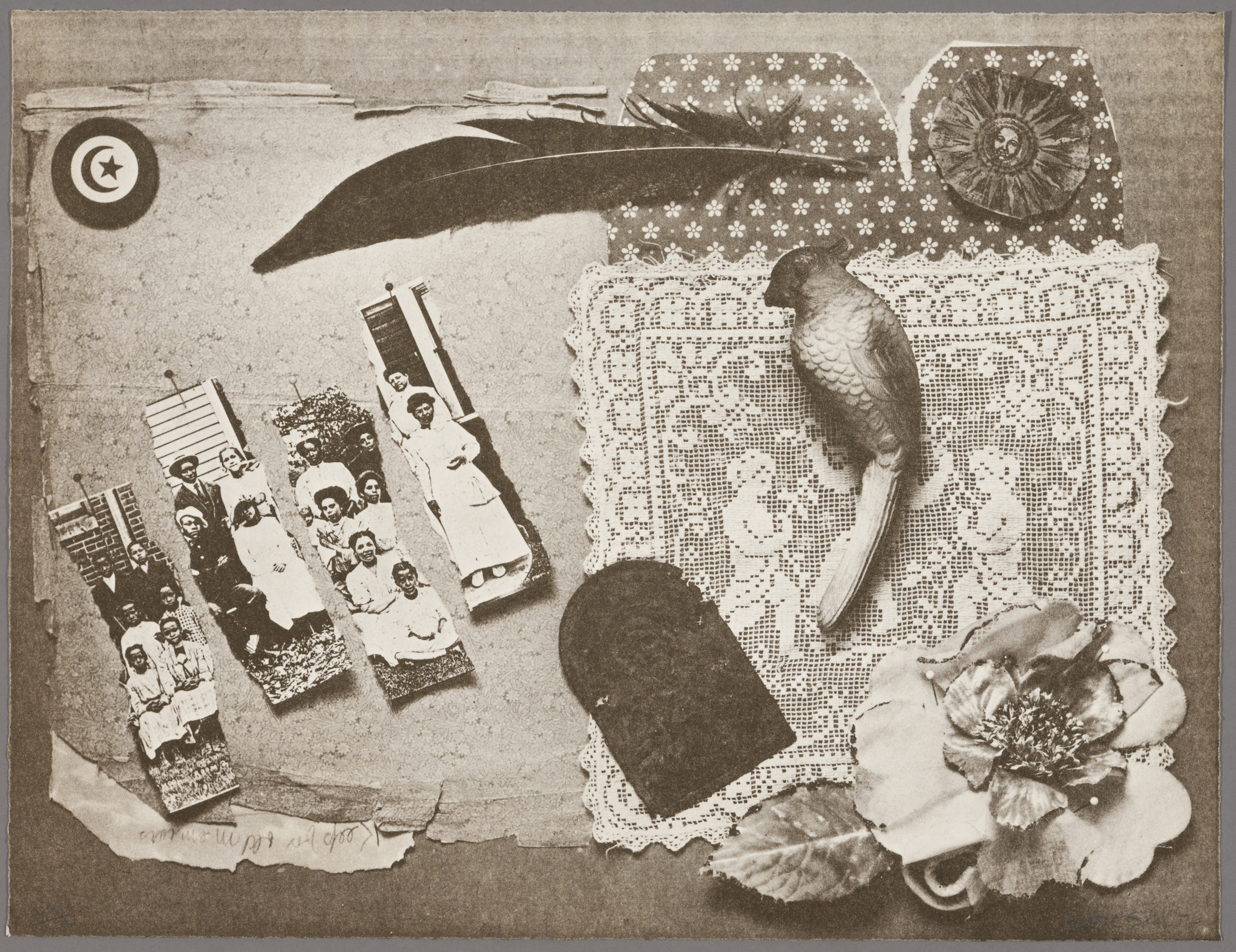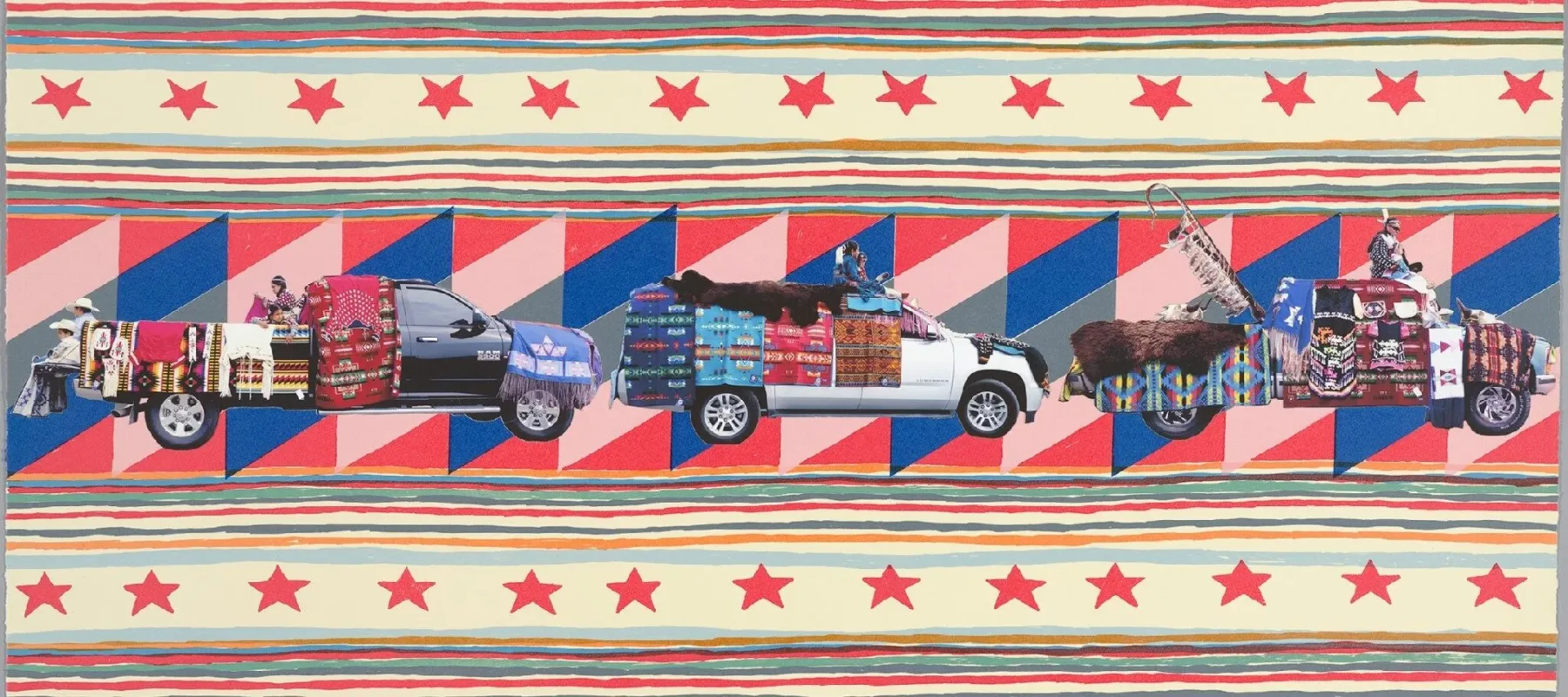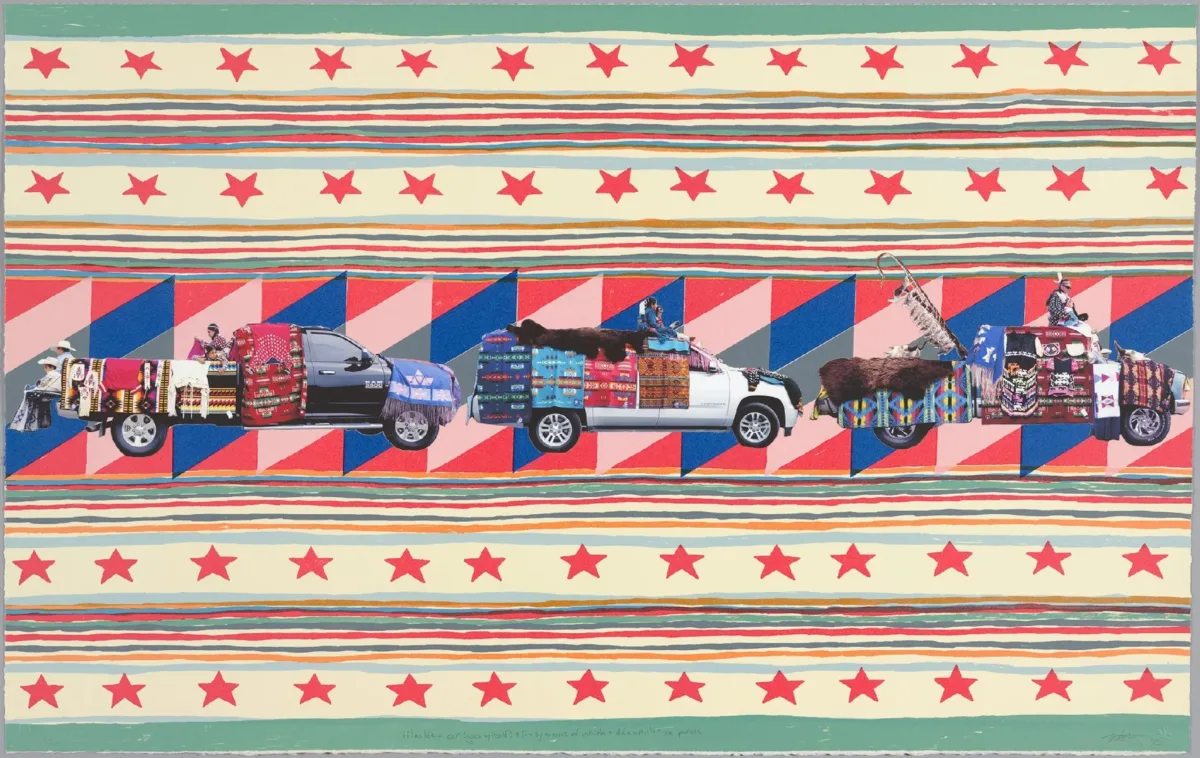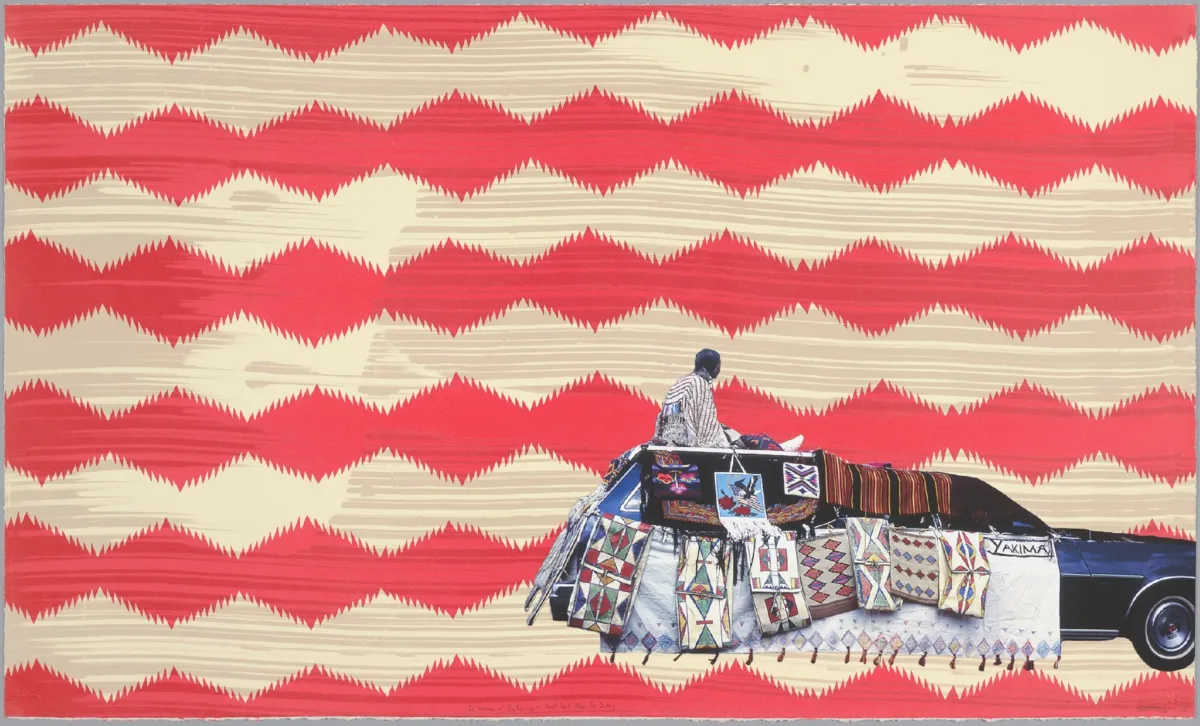On view at the American University Museum at the Katzen Arts Center from January 29 through May 22, 2022, Positive Fragmentation: From the Collections of Jordan D. Schnitzer and His Family Foundation includes more than 100 works by 21 contemporary artists who use fragmentation both stylistically and conceptually. Through their prints, artists including Betye Saar, Wendy Red Star, Lorna Simpson, Jenny Holzer, Louise Bourgeois, Julie Mehretu, Swoon, Mickalene Thomas, and Sarah Morris question the status quo and suggest new perspectives.
The title Positive Fragmentation comes from a term coined by the feminist scholar and critic Lucy Lippard in her 1978 essay “Making Something from Nothing,” in which she addresses the gender discrimination that separates the concepts of “high” art and “hobby” art. She describes positive fragmentation, or the “collage aesthetic,” as particularly suited to historically marginalized artists, as it “willfully takes apart what is or is supposed to be and rearranges it in ways that suggest what it could be.”

Of all the artists in Positive Fragmentation, it is Betye Saar (b. 1926) whose work, in her collective oeuvre and the singular print in this exhibition, exemplifies the taking apart and reconstituting of objects and ideas. Saar is the undisputed champion of positive fragmentation, implementing it to cast a critical eye on constructs of race and gender. Saar’s 1976 lithograph Fragments, like her three-dimensional assemblages, relies on the collage aesthetic that Lippard would theorize just two years later in her essay.
In this lithograph, Saar makes something, art, memory, history, from the assembled objects, creating new meanings and associations through their juxtapositions. Those meanings may be enigmatic for viewers, but they lead to questions, which in turn lead to the contemplation of the Black lives represented in the torn photograph on the left. Of Saar’s use of found photographs, which the artist collects from flea markets and garage sales, art historian Leslie King-Hammond says, “Countless individuals who were rendered invisible within their lifetimes and nearly lost to memory but for the remaining photographs of their presence find their images reborn in Saar’s reconstructions.”
Similarly, photo montages by Wendy Red Star (b. 1981)—iilaalée = car (goes by itself) + ii = by means of which + dáanniili = we parade (2015–16) and Yakima or Yakama—Not For Me To Say (2015), combine elements to honor the histories of Indigenous American tribes and reflect the ingenuity of the present. Photographs of cars decorated for Crow Fair, an annual gathering of Great Plains tribes, are superimposed on geometric backgrounds whose designs are taken from Pendleton blankets. Although the company was founded by and is operated by Anglo-Americans, Pendleton blankets incorporate designs based on traditional motifs taken from many Indigenous cultures.
The history of these blankets is inextricably linked to Native communities, and they have become objects of prestige and ceremonial importance. Together with the distinctly American-made cars and trucks that are often decorated for parade as horses would be, Red Star’s images embody what Lippard observed about the collage aesthetic being a means for “putting things together without divesting them of their own identities.”
Check out Positive Fragmentation at the American University Museum, Friday–Sunday, 11 a.m.–4 p.m. Free. No reservations required. Please visit their website for current visitor information.



